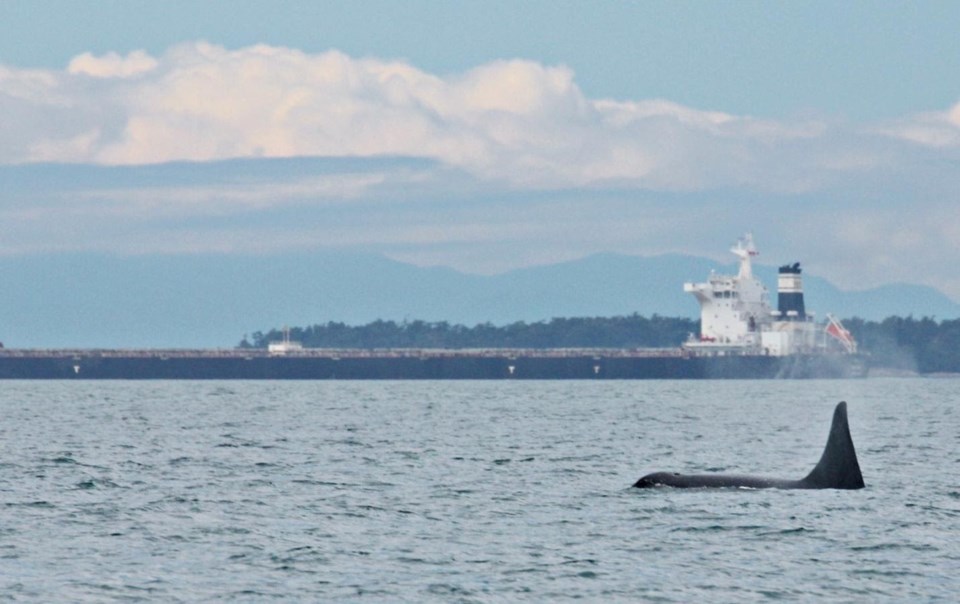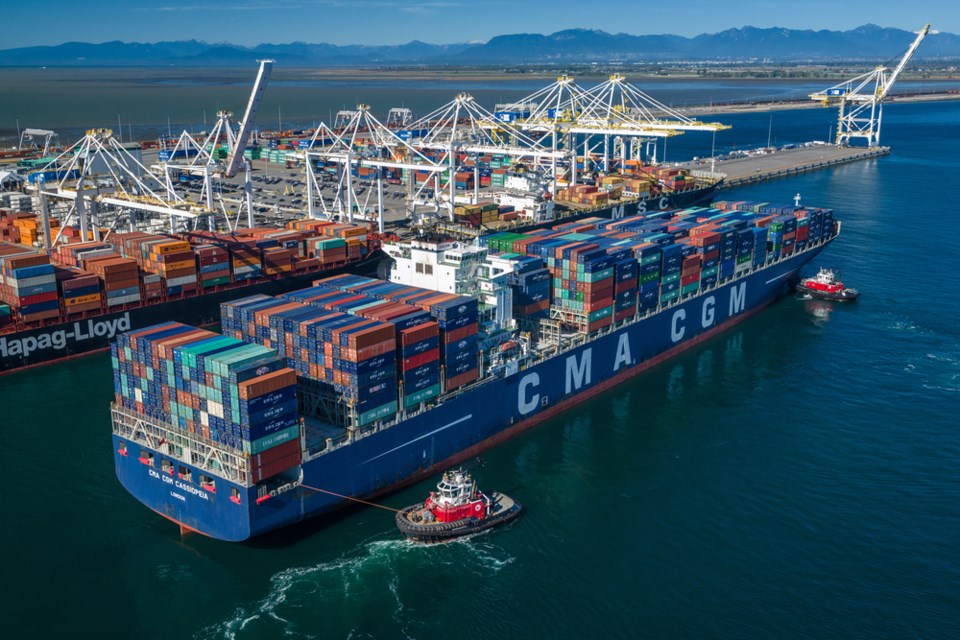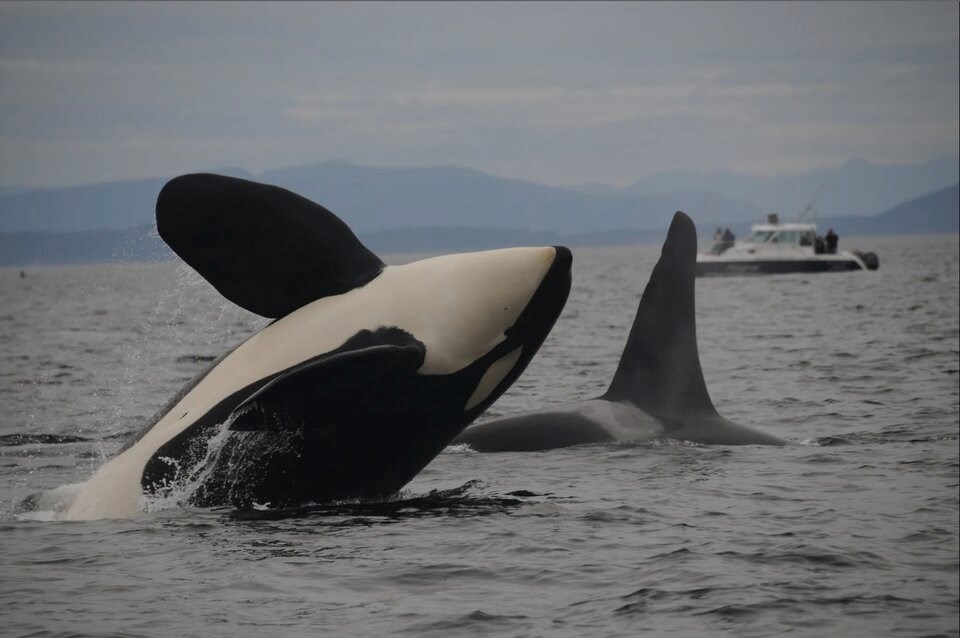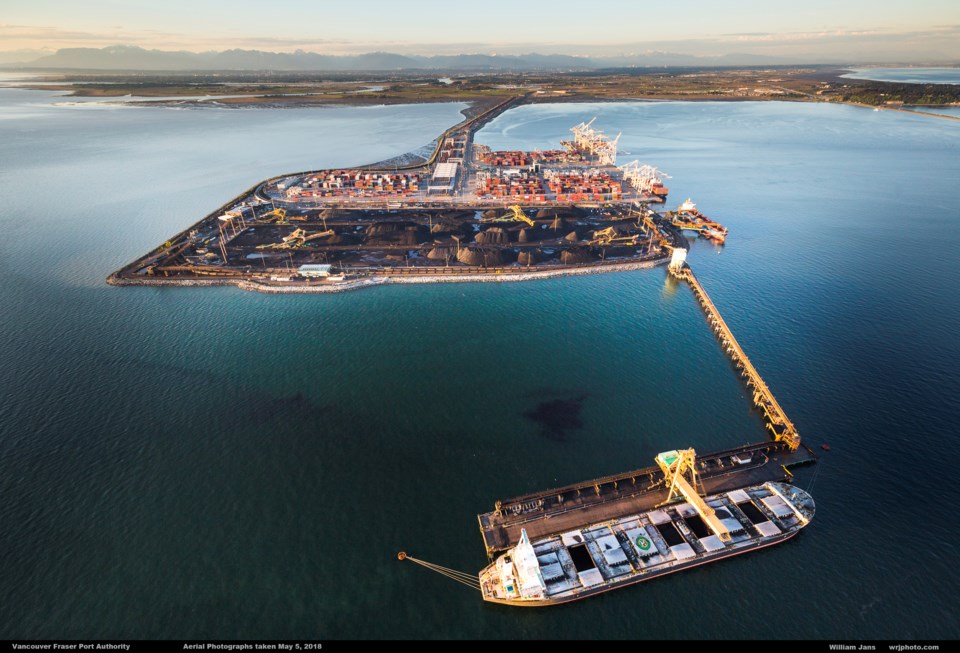A legal challenge claiming the planned expansion of sa���ʴ�ý’s largest port would threaten the survival of endangered southern resident killer whales has been struck down by a federal judge.
The ruling, handed down Jan. 10, comes nearly seven months after four environmental groups took the Canadian government and the Vancouver Fraser Port Authority to federal court over the approval of the Roberts Bank Terminal 2 expansion in Delta, sa���ʴ�ý
Built on a new man-made island adjacent to the current Deltaport container facility, the port authority project seeks to add a three-berth marine container terminal, a widened causeway that would expand road and rail lines, and an extended basin for tugboats.
The expansion is forecast to grow container capacity on sa���ʴ�ý’s West Coast by a third. Without it, the federal government says $3 billion in added GDP would be put at risk by capacity shortages.
In an email Monday, a spokesperson for the port authority said that while it is still reviewing the court’s decision, the terminal is “vital to support Canadian trade and our shared prosperity.”
“This decision reaffirms the rigor of the federal environmental assessment process that Roberts Bank Terminal 2 went through,” said the spokesperson.
Ecojustice staff lawyer Dyna Tuytel, who represented the four applicants — Georgia Strait Alliance, David Suzuki Foundation, Raincoast Conservation Foundation and Western sa���ʴ�ý Wilderness Committee — said the decision still requires the project proponents to put safety measures in place to better protect the whales.
Her clients have 30 days to appeal the ruling, but if it stands, Tuytel says it means there will fewer safeguards to protect endangered species in sa���ʴ�ý.
Lucero Gonzalez, a conservation and policy campaigner for the Wilderness Committee, said the decision was “heartbreaking” and one that offers a precedent for bypassing sa���ʴ�ý’s laws that protect endangered species.
“It tells developers, it tells industry there’s no limits,” Gonzalez said. “It’s a path to southern resident killer whale extinction.
“Right now, it's not whether they will go extinct. Right now, it’s when.”
Shipping traffic, destruction of habitat risks pushing whales to extinction, says court challenge
In June, lawyers for the four applicants argued the expansion would destroy 177 hectares of vital habitat for juvenile chinook salmon, the preferred prey for the endangered southern resident killer whale population.
Noise from construction of the port’s expansion, as well as a subsequent increase in shipping, could also throw off the whales’ ability to forage, said lawyers for the environmental groups.
Ranging from California to sa���ʴ�ý, the southern residents' numbers have stagnated at around 75 individuals for decades. The genetically distinct population was listed as endangered under the Species at Risk Act in 2003.
In the two decades since, scientists say the whale is threatened by a combination of climate change, toxic chemicals, vessel strikes and underwater acoustic disturbances.
The most recent analysis from Fisheries and Oceans sa���ʴ�ý shows they face a 24 per cent chance of functional extinction as early as 75 years from now.

The judicial review challenged the environment minister’s approval of the port project’s environmental assessment carried out under the Canadian Environmental Assessment Act (CEAA), claiming it came into direct collision with the Species at Risk Act (SARA).
The case represented the first time a major industrial project has come into direct conflict with a species protected as endangered under SARA. Lawyers on the side of the environmental groups cited multiple scientific and government panels who found that, unmitigated, the expansion project will accelerate the extinction trajectory of southern resident killer whales.
Lawyers for the applicants also challenged an April 2023 federal cabinet decision to approve the port expansion after adverse effects on the whales were identified.

Cabinet's decision to approve the project, argued lawyers from the firm Ecojustice, lacks “justification, transparency, and intelligibility” and fails to make it clear how it and the environment minister fell into line with the SARA.
The cabinet decision came with 370 legally binding conditions to protect the environment and protect harm to local species. But lawyers for the environmental groups argued that the decision failed to list any new measures that would directly avoid, lessen or minimize effects on the whales, measures that are required by law under SARA.
In her ruling released Monday, Federal Justice Christine Pallotta summarized the applicant’s argument against the government as a “collective failure” with the minister failing to identify all feasible measures to protect the whales, “and despite this failure, Cabinet made the justification decision anyway.”
As Ecojustice’s Charlotte Dawe put it during the hearing: the expansion project is an “extinction bomb.”
Government, port say legal challenge 'fundamentally flawed'
In court, lawyers for the port authority and Canadian Minister of Environment and Climate Change Steven Guilbeault, who approved the project, described the legal challenge as “fundamentally flawed.”
They told the judge that the minister would continue to have an oversight role in the project. The cabinet decision, they said, was not directly bound by SARA, and instead was a “discretionary one based on the widest considerations of policy and public interest.”
That public interest includes wider economic benefits — like improving supply chain resilience and boosting international trade — and should lead the court to agree the port expansion approval was “justified in the circumstances,” he said.
“Only the governor-in-council, not this court, is equipped to evaluate such considerations,” government lawyer Jon Khan told the court in June.
Khan urged Justice Pallotta to avoid prejudging the future effectiveness of project conditions on the whales. Doing so, he said, would wrongly allow court become “an academy of science.”

Geoff Cowper, a lawyer for the Vancouver Fraser Port Authority, argued the expansion project was needed to avoid breaching port capacity and losing business to other North American ports.
In submissions to the court, the port authority said the Roberts Bank Terminal 2 expansion project would increase the total container capacity on the West Coast by about one-third. That would allow the terminal to move $100 billion in goods every year, added a port spokesperson.
Cowper said the decade’s long approval process would protect whales through the timed departure of container vessels, ship slow-down measures near the port, and monitoring of underwater noise. A spokesperson added that the port will rest 94 hectares of habitat for young salmon.
Cowper said federal laws recognize all big infrastructure projects cannot be completed without adverse environmental effects, and that they need to be balanced with “all the virtues and benefits of the project” on behalf of national interest.
“That's why it's a cabinet decision,” he said at the June hearing. “That's why it's pointed up to the senior political executive of the country to evaluate the country's interests.”
Minister and Cabinet acted reasonably in approving port expansion
In her decision, Pallotta said when it comes to the Species at Risk Act, the minister must act reasonably, but under law can exercise discretion when deciding which measures to mitigate harms to protected species are appropriate.
The environmental groups argued that future permitting processes under SARA will be less effective because they will only assess the effects of specific project-related activities, and not the project as a whole.
Pallotta disagreed. She said the 370 conditions from the Cabinet decision are “binding” on Vancouver Fraser Port Authority, and the minister “has powers of enforcement that include penalties and the ability to seek an injunction,” she wrote.
The judge rejected arguments that the minister failed to meet his obligations under SARA and found Cabinet did not have obligations under the act.
Instead, its role was limited to a decision on whether the project’s adverse environmental effects are justified given the port expansion’s role in international trade, improving the country’s supply chain, and the wide-ranging benefits to the economy.
“The applicants make compelling policy arguments; however, this court is bound to apply the policies that Parliament has implemented in its laws,” Pallotta said.
The port authority told the judge that as of Jan. 10, it had not submitted an application for authorization under SARA and the Fisheries Act. In her ruling, the port is quoted saying it is expecting to do so “in several months time” after a review and consultation process “likely to take more than a year.”



